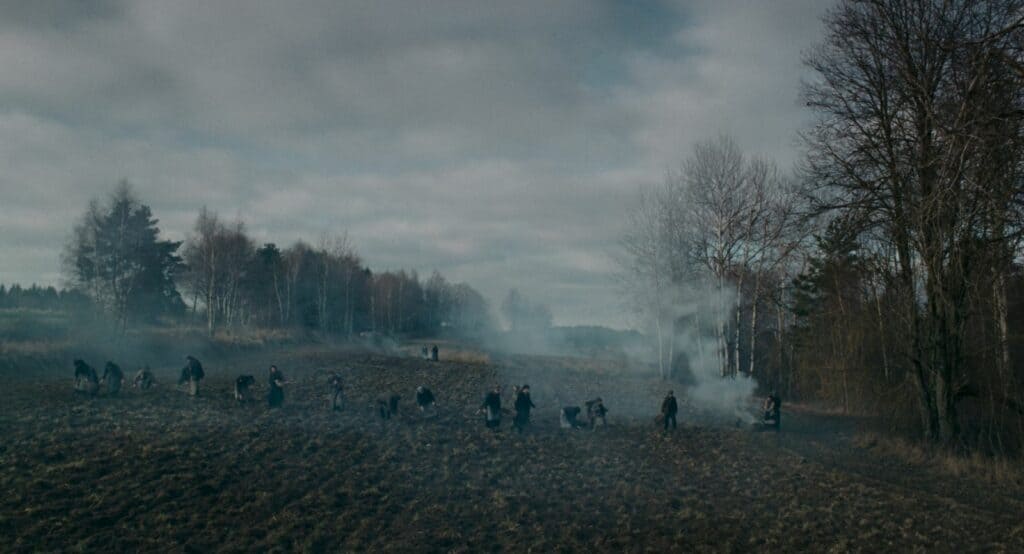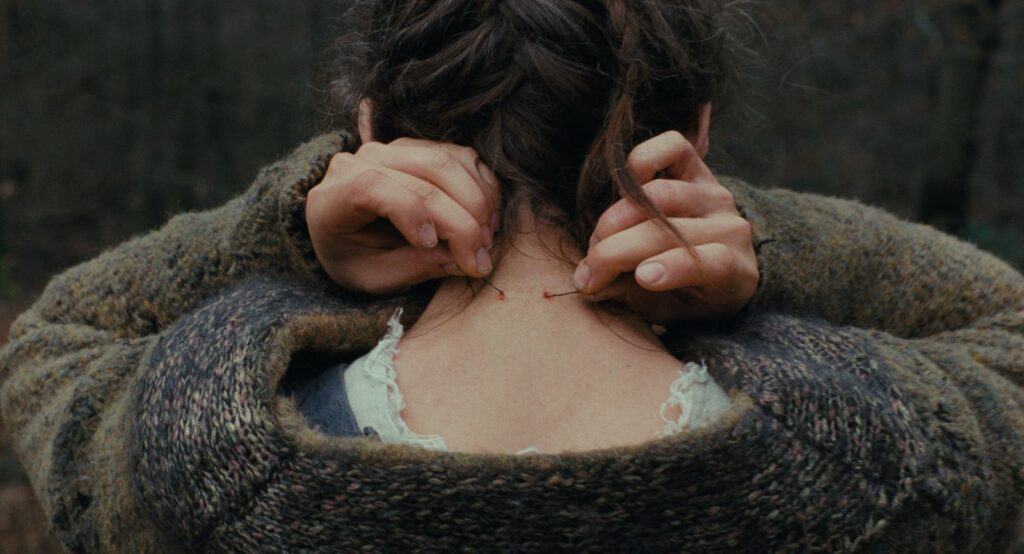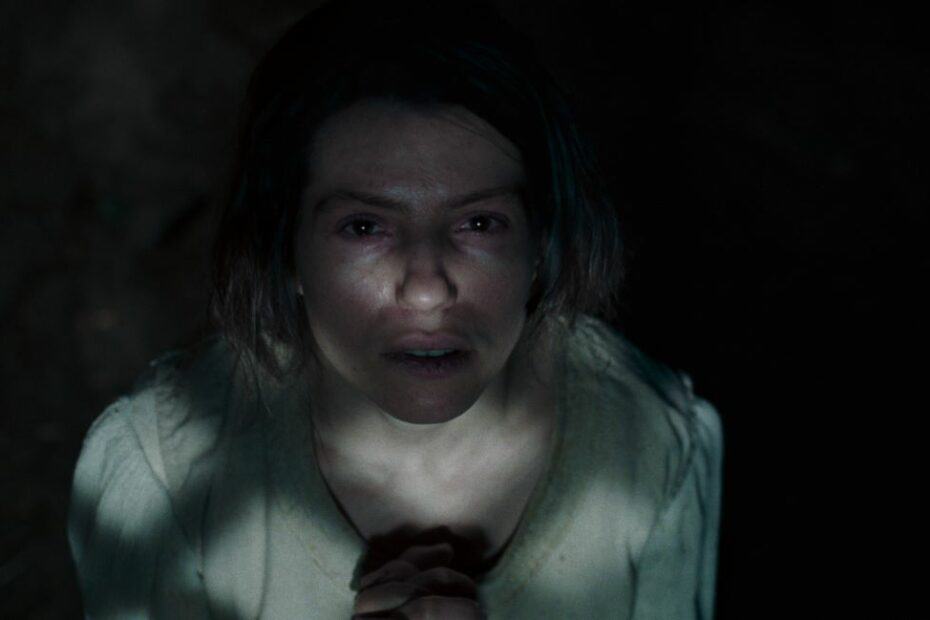The Devil’s Bath (Des Teufels Bad) is Veronika Franz and Severin Fiala’s third film, following Goodnight Mommy (Ich seh, Ich seh 2014) and The Lodge (2019). I have only seen the former and wasn’t overly impressed, even though there were some creepy moments. The world premiere was in the Berlinale competition, and considering that there were some bold choices there this year, I decided to give the directors a second chance. The story is set in 1750 Upper Austria. In an early sequence, a mother throws her screaming child off a waterfall. Then, she confesses her crime to the authorities and is sentenced to death. After the execution, her fingers and toes are cut off and given out.
At the Cannes Festival in 2022, David Cronenberg promised walkouts during the first ten minutes of Crimes of the Future. I’m not aware if Franz and Fiala made a similar pledge. I would guess not since this is only the beginning of gruesome scenes in The Devil’s Bath. We are introduced to Agnes (Anja Plaschg), who is getting married to Wolf, who comes from another community. He doesn’t show much interest in her, even on their wedding night. Meanwhile, his mother is prone to controlling Agnes. Her life is not a happy one. She is brought to the local barber to cure her from her melancholia (The titular bath), but the treatment is more painful than anything else.

The Devil’s Bath becomes the spectator’s melancholia
Anja Plaschg is mainly known as a musician under the moniker Soap&Skin, and the directors initially reached out to her to compose the film’s score. However, the script struck her so hard that she wanted to be part of it in other ways as well. Thus, she ended up playing the main part. She added that she was “so fed up with this abundance of male history, with male violence, with all the war films” and that, for her, “The Devil’s Bath fills a gap because it tells of the inner war experienced by women.” That is how Plaschg ended up doing her first fully-fledged dramatic role.1 Not counting her reading as Ingeborg Bachmann in Ruth Beckermann’s Die Geträumten.
The Devil’s Bath is quite meticulous in its approach to capturing the era, which might gain points with historians but does little to elevate the work as an intriguing piece of cinema. Apparently, the directors are aware of this since they routinely throw in genre elements, more specifically from the horror genre. Weirdly enough, this inelegant mix of tedious historical reenactment and token feminism seemed to register with a fair amount of critics. The film also received a Silver Bear for its cinematograph, which is no less puzzling. The film is lensed by Martin Gschlacht, who might be most well-known for his collaboration with Jessica Hausner, most recently in Club Zero. What he delivers here is far less intriguing.

Who is in the details?
For all the (artistically) cheap effects on display, The Devil’s Bath amounts to little more than a highly academic affair. The punctilious efforts create numbness rather than any sense of awe in the spectator, and the descent into horror literally amounts to nothing. There is a nineteenth-century expression that says that God is in the details. The phrase’s origin is uncertain, but the common variant that substitutes God with the devil is as recent as 1963. In any case, as this film clearly shows, getting stuck in the details instead of working on the overall structure is bound to fail.
The Devil’s Bath was produced by Ulrich Seidl, who is married to Veronika Franz. Fans of Midsommar (2019) Robert Eggers and the lesser work of Dreyer, such as Day Of Wrath (Vredens Dag 1943), may have a head start. The film ends with a text explaining what happened in the film and why. With any other film, I would call such a text superfluous, but with this one, the feeling is instead that the explaining note would have been enough. However, my own experience might have been hampered by watching the vastly superior Pepe the night before.
The film received a Silver Bear for its cinematography, which is a somewhat perplexing decision.

